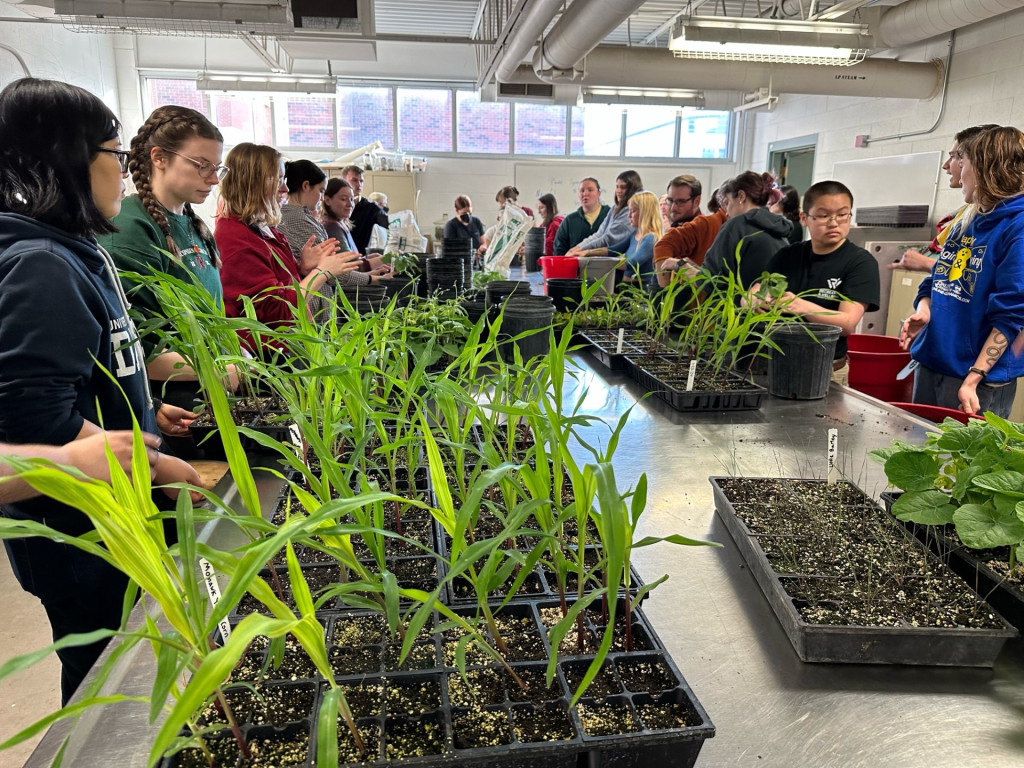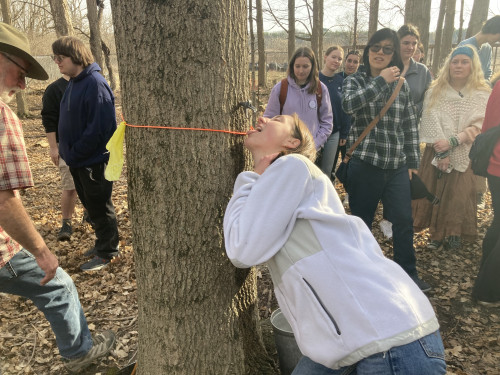Student to student: Out-of-classroom experiences create ‘connectivity’

An Irwin Goldman class session involves planting the “Three Sisters” of indigenous tradition — Corn, squash and beans.
Most of the learning at UW–Madison is done in lecture halls, labs, and discussion sections.
But, in some departments on campus, the professors know how to spice things up and create unique learning experiences outside the classroom.
Professor Irwin Goldman in the Department of Plant and Agroecosystem Sciences, who specializes in plant breeding, leads his students across the city to help build a connection between class content and the real world.
Across just a few courses, he partners with Wisconsin-based experts such as Jon Greendeer, president of the Ho-Chunk Nation, and Daniel Cornelius, outreach program manager for the Great Lakes Indigenous Law Center, to take students ice fishing, butcher deer for research, explore indigenous foodways at traditional locations and tap trees for sap in the Arboretum. It all stems from his love for passing on knowledge but knowing how to combine it with the abundance of resources on campus.
“I love being in the classroom with the students … but it has to be mixed in with something else,” Goldman said. “It seems like a crime not to take advantage of the access we have to this incredible trove of nature right outside and the ability to be at the lake in five minutes.”
The extra benefit of these experiences shines through in the students’ work thereafter, too, as he often notices an increased understanding of topics that he and his students explore out in the real world.
“I really let the students live in the moment out there, experience things through their own senses, and then follow up later, maybe in another class session,” he said. “In return, there is a new kind of connectivity [to the content], and I believe it’s because of the experiential senses that resonate in new ways,” he added.

The class taps a maple tree for its syrup.
Professor William Brockliss applies similar logic to his coursework and events that he puts on as the director of the Center for Culture, History, and Environment. In trips such as his “Rails and Trails” program, he sees a similar development in students’ connectedness to the content.
“I can look at individual instances where these experiences seem to inform people’s projects or coursework … providing enrichment to their studies of certain themes,” he said.
Like Professor Goldman, Professor Brockliss also knows that taking advantage of the resources available on campus is essential to maximizing learning opportunities. As a classics professor, he explores the interactions between literary texts and the natural environment, including a series of class trips to Devil’s Lake State Park to learn about cyanotype photographic printing traditions in nature.
“By getting involved with beyond-the-classroom experiences, you end up with a much richer appreciation of whichever themes you may be looking at, especially in the environmental arena,” he said.
In all, both professors hope to stress the importance of variance in the classroom by stepping outside of it, even more so when the experiences enrich coursework, projects, or overall learning.
“Every new experience you have can broaden your horizons. You get a completely new angle on what you can do in any educational setting,” Brockliss said.
Tags: teaching
